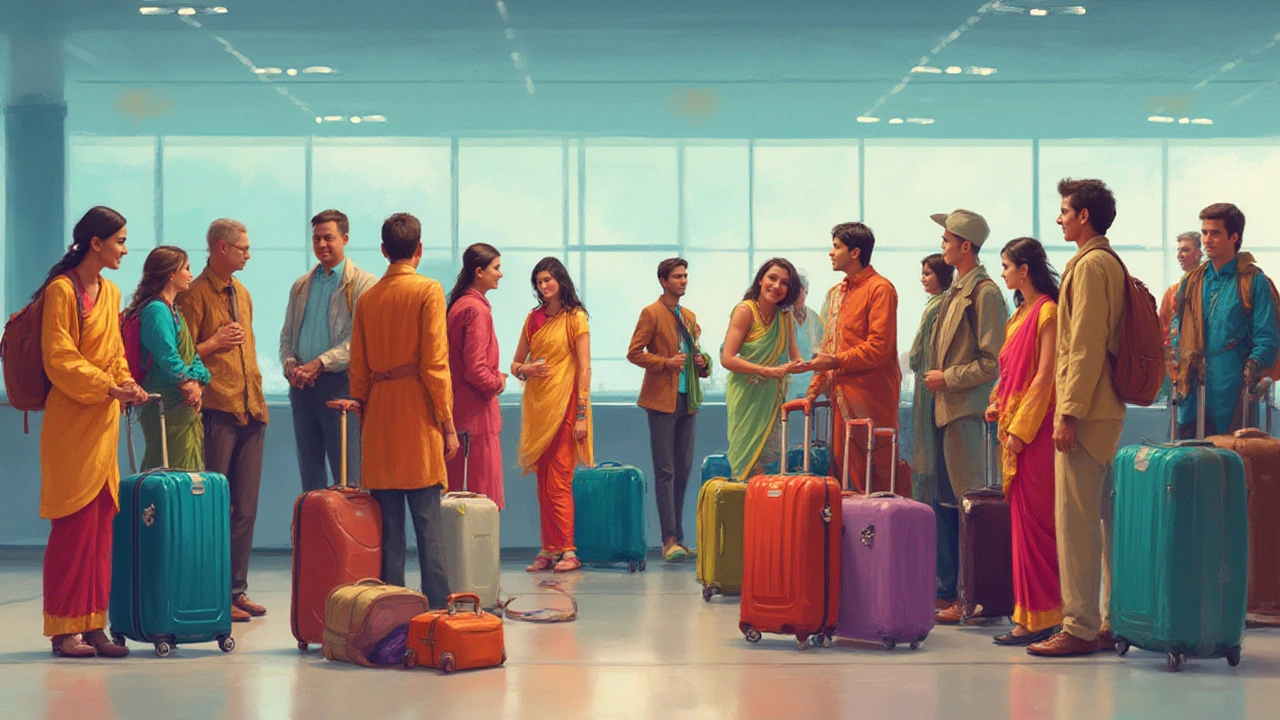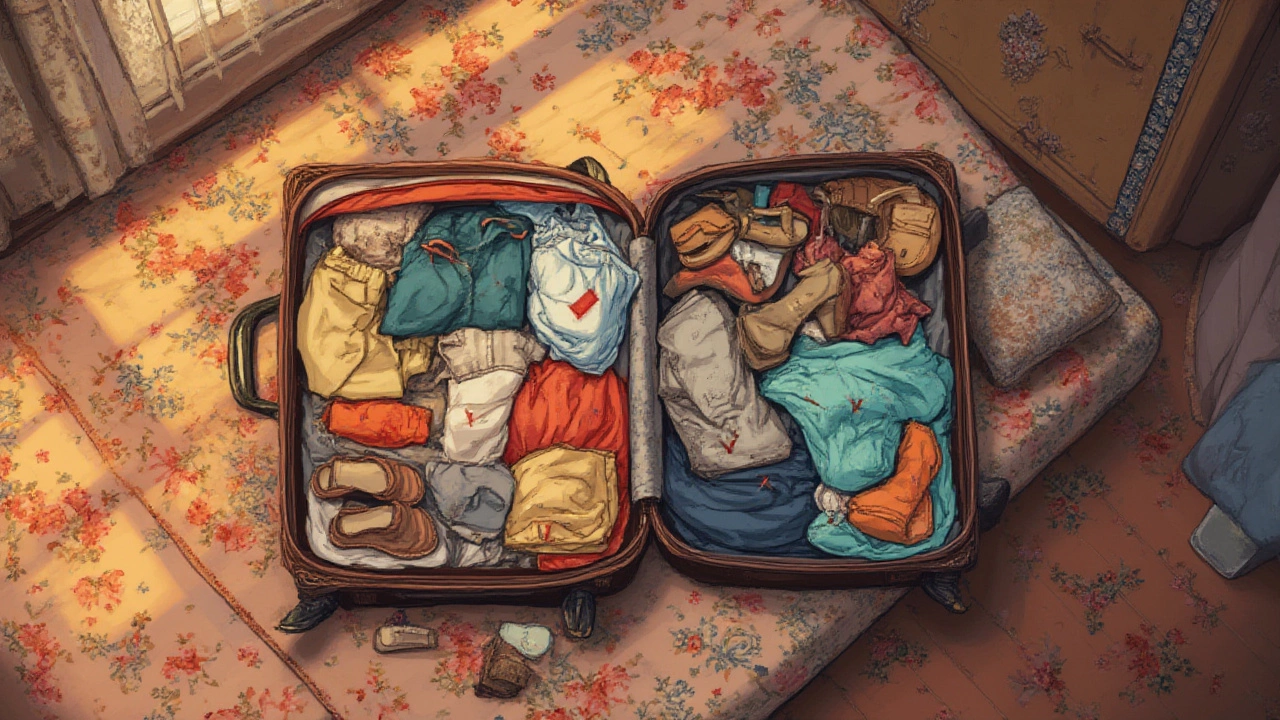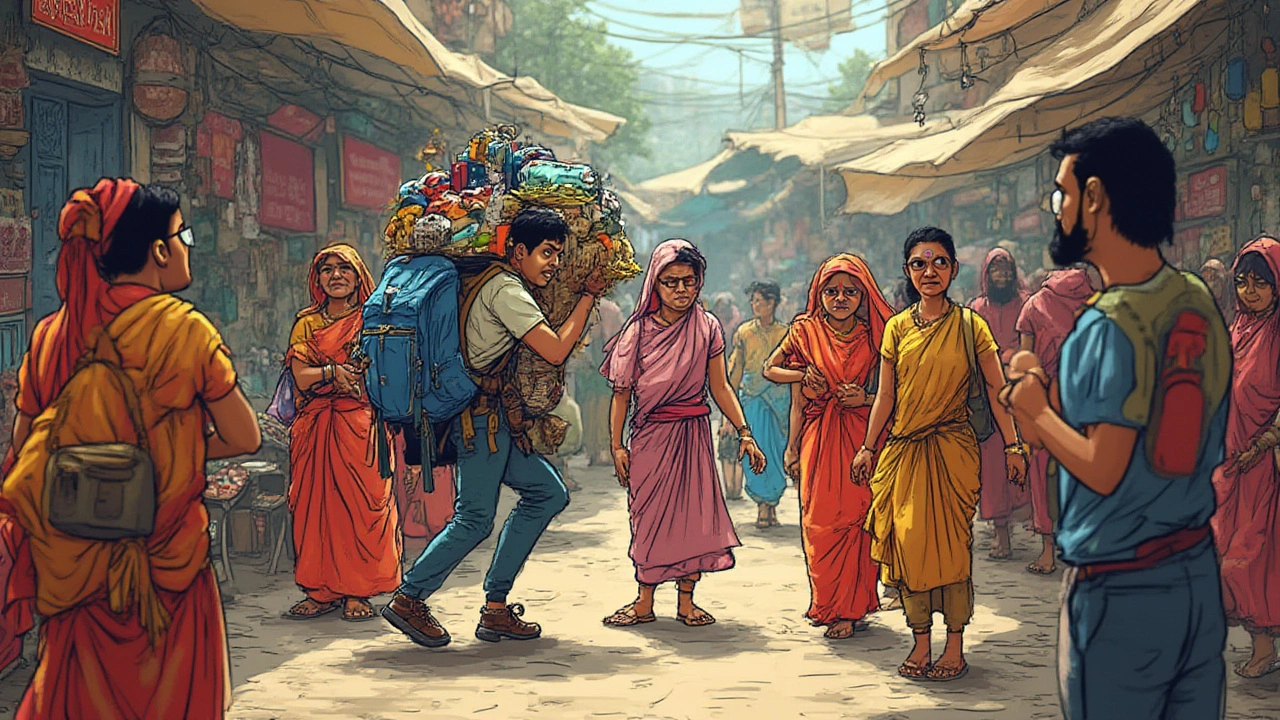What Not to Bring to India: Essential Packing Tips for Stress-Free Travel

- Jul, 26 2025
- 0 Comments
- Aaron Blackwood
There’s a reason seasoned travelers seem so relaxed rolling into chaotic Indian train stations or bustling marketplaces while others look like they’re one bus ride away from a total meltdown. It’s not Zen meditation, trust me—it’s smart packing. You don’t actually need that second hair straightener or a kilo of peanut butter, but you do need to know what to absolutely leave out of your suitcase. India has its own rhythm, and you’ll stick out like a sore thumb—or just make life hard on yourself—if you bring the wrong stuff. So, let’s cut through the noise and talk about what not to bring to India, based on real stories, a little hard-earned wisdom, and the hard facts about how the country ticks.
Items That’ll Only Weigh You Down (Physically and Mentally)
Packing for India can be an anxiety-fueled adventure on its own. There’s the temptation to prepare for every possible situation. But here’s the first truth: you can buy almost anything you actually need once you’re there—and it’ll probably cost less than at home. Lugging extra stuff just because ‘what if I need it?’ won’t make life easier.
Piling on heavy suitcases filled with things like thick winter coats, hiking boots for street-walking, or excessive medical supplies won’t help. Take the climate as your first hint. Unless you’re off to Ladakh in winter (which, trust me, you’d know if you were), India’s cities and plains are hot for most of the year. Thick coats, thermal underwear, or heavy hoodies become dead weight. Locals wear light cottons year-round for a reason. You actually want your skin to breathe in the muggy chaos of a Delhi July or Mumbai October. Even mountain trips outside of deep winter don’t require penguin-level insulation; you’ll find affordable, locally-made sweaters and shawls without breaking your back or your budget getting there.
Next up are shoes. Sturdy hiking boots may look great on the Himalayan trails, but try stomping through Mumbai traffic or temple courtyards with those monsters and you’ll wish you’d stuck to sandals or breathable sneakers. In fact, many religious places won’t let you enter with shoes, period. Invest in easy slip-ons or sandals. Inexpensive flip-flops are available everywhere—street vendors sell them for almost nothing.
Forget about rallying your electronic army as if heading into apocalypse. Voltage and plug differences in India (230V, Type C/D/M sockets) will fry devices if you skip converters, and multi-voltage gadgets are bulky. Leave hairdryers, curling irons, and straighteners behind unless you’ve really checked voltage compatibility. Most hotels—even budget ones—have them upon request, or you’ll find a local salon for cheap. Power banks can come, but two is enough. Anything more is just paranoia, not preparation.
Another crowd-pleaser at the “why did I bring this?” awards: giant bottles of toiletries. Every city, every town platform, even tiny highway shops will have every soap, shampoo, deodorant, or toothpaste you could ever want. The only smart exception is specific prescription products you can’t replace locally. Same goes for medical kits; don’t drag around a pharmacy. Just cover basics—pain relief, diarrhea meds, bug spray. If you do get sick, pharmacies and clinics are everywhere and far less intimidating than you might expect.
Let’s talk food. Unless you’re prepping for an expedition to a remote mountain village, skip bringing lots of food from home. Granola bars, peanut butter tubs, or dozens of protein shakes aren’t going to save you. Indian snacks and fruits are everywhere, ridiculously cheap and part of the fun. If you have allergies or strict dietary restrictions, sure, bring what you need for emergencies, but don’t try to pack a week’s menu from home. Even gluten-free and vegan options are getting easier to track down in cities like Goa, Bengaluru, and Mumbai.
Bags inside bags: avoid hard-shell suitcases or giant rolling cases unless you’re sticking to five-star hotels the whole way. Indian streets, train stations, and village roads are not kind to wheels or fragile luggage. A good backpack or duffel bag you can toss in an auto rickshaw is far more practical. If you need to transport valuables, use a small anti-theft daypack. Anything fancy screams ‘tourist with stuff’ and catches the wrong kind of attention.

Stuff That Can Land You in Trouble or Just Feel Out of Place
There are a few things that go beyond annoying—they’re actually risky or inappropriate. The most obvious? Anything illegal or even borderline legal. Don’t even think about bringing recreational drugs, even if they’re legal in your home country. India has strict drug laws and zero patience for tourists who assume otherwise. That goes for certain kinds of CBD oil or vapes as well; customs officers love an easy case.
Alcohol is legal in most states but heavily regulated. Don’t load up on spirits in your bag or think you can show up with a duty-free haul yawning out of your backpack. Some states like Gujarat, Bihar, and Nagaland practice prohibition, and bringing alcohol into “dry” areas—even by accident—can lead to fines and police hassle. If you want a drink, buy it legally in India. It’s usually cheaper anyway.
One thing first-timers often get wrong is conservative attire. Flashy club dresses, skimpy shorts, or see-through tops belong off your packing list, not just for temples but also in city streets. India isn’t the place for making fashion statements with revealing clothing—even in cosmopolitan hotspots, you’ll attract stares and, sometimes, unwanted attention. Blend in with loose, comfortable, modest outfits. You’ll find out fast that kurtas and linen pants beat miniskirts for street cred and comfort.
Gadgets are also a double-edged sword. Traveling with drones, pro-level cameras, or anything that looks military-grade can raise eyebrows or worse at airports. Permit rules for drones in India are tight, and tourists often find themselves stuck in legal gray areas. Same story with walkie-talkies, satellite phones, or powerful WiFi boosters; these are often restricted or banned. Even fancy cameras sometimes require a permit in certain national parks or historical sites, so unless you’re a pro on assignment, scale down your tech arsenal.
Pornography in any form—print, digital, whatever—is illegal in India, and customs can and do check devices. Don’t take the risk. Any controversial books or politically sensitive materials should also stay home. India’s political climate changes quickly, and carrying banned books or campaign leaflets—about Kashmir, for example—could set off alarms or cause entry trouble.
Don’t bring large quantities of cash. ATMs are widely available basically everywhere except remote villages or mountain hamlets, and carrying a big wad can put a target on your back. Debit and credit cards are accepted in most urban and touristic areas, and mobile payment apps like Paytm or GPay are exploding in popularity. Bring a backup card kept separate from your main wallet, but there’s no need to stash months of cash in your socks or shoes.
Don’t import expensive jewelry or luxury watches. If you can’t bear to part with it, consider why you’re bringing it to India in the first place. Not only do you risk theft, you’ll also spend extra time at customs explaining why you have something worth thousands of dollars. Simple, sturdy, and under-the-radar is the smart choice.
If you’re a smoker, leave those cartons of cigarettes at home. Import rules are strict—only 100 cigarettes or 25 cigars are allowed, and the fines for overage are stiff. India’s own cigarette market is massive (though if you want Western brands, buy at duty-free on arrival), but you really don’t need your year’s supply. The same rule applies to chewing gum—it might sound odd, but certain states actually restrict or even ban chewing gum to keep tourist sites clean. Another good reason to skip packing stacks of it.

What You Should Take Instead and Smart Packing Tips
Okay, so what should actually make the cut? The rule is “pack for what India is, not what you’re used to.” That means flexible, low-profile, and practical wins every time. Start with breathable, comfortable clothes: cotton shirts, loose tops, and linen pants or light jeans. Adaptable pieces you can mix and match will make your life much easier without screaming “tourist.” If you want, pick up some local clothes when you arrive. Not only will you blend in, but they’re made for the climate and usually much cheaper.
What not to bring to India boils down to stuff you can replace locally. For toiletries, plan for the first couple of days only and restock as you go. Sunscreen, bug repellent, and a refillable water bottle are useful; the rest can be found everywhere. For electronics, take universal sockets or adapters, a single power bank, your phone, and maybe a tablet or light laptop—just enough, not an electronics shop in a bag. High-end cameras are unnecessary unless you’re serious about photography; a good phone camera will catch daily wonders without making you a target.
Keep medication lists and a doctor’s note if you must carry prescription meds, and check Indian import laws—it’s usually fine for a personal supply, but always check official lists. For first aid, just the standards (band-aids, painkillers, diarrhea medication, and bug cream) will do. You can find pharmacies literally everywhere, and a local doctor visit won’t empty your wallet.
Documents are another pitfall. You need a passport and visa, obviously, but don’t overdo it on papers and printouts. Digital backup copies on your phone or in secure cloud storage will save you stress if you lose something. A single hard copy of your passport, visa, and main bookings slips into your daypack as a sanity saver for emergencies.
Money works best if spread out: a main card, a backup card, and a small wad of rupees for when ATMs are far between (think: late train arrivals or remote villages). Keep larger amounts locked in your accommodation if you must. Most hotels, restaurants, and even tuk-tuks in cities accept mobile payments now. If you’re stuck, Indian bank staff are usually friendly and can help non-locals get sorted quickly.
Pack light but think versatile. India’s endless “just-in-time” services—laundries, tailors, grocery shops—mean you can always find what you need. Save your energy (and sanity) for the good stuff, like navigating a wild night market or hiking up to a foggy fort at sunrise, not for hauling three suitcases up a flight of government office stairs because customs found your drone. Trust the process: less is more, and India rewards travelers who arrive flexible, open, and just a little less stuffed-to-the-gills.